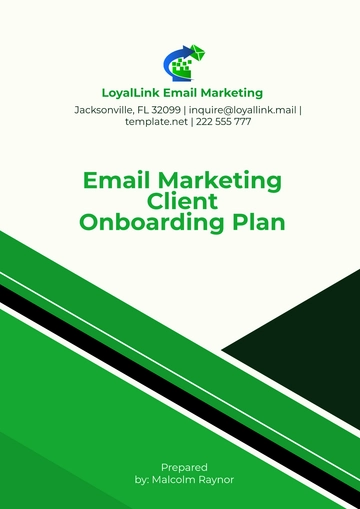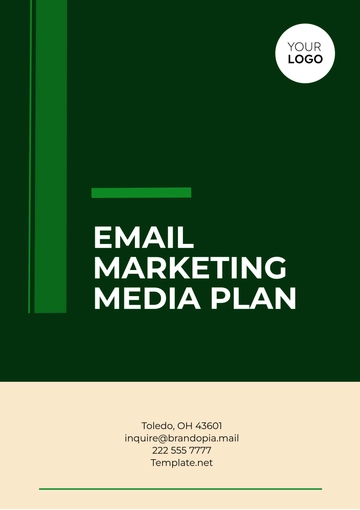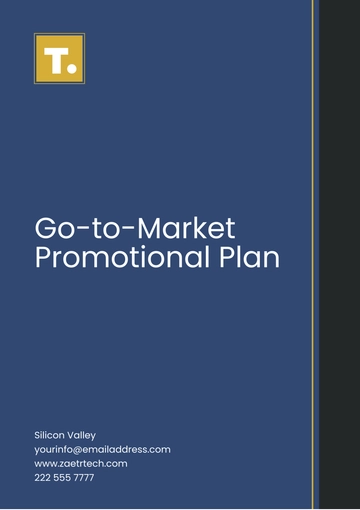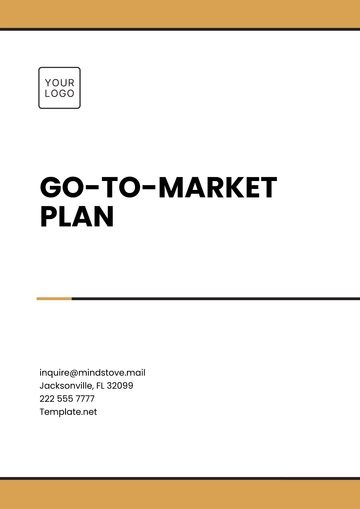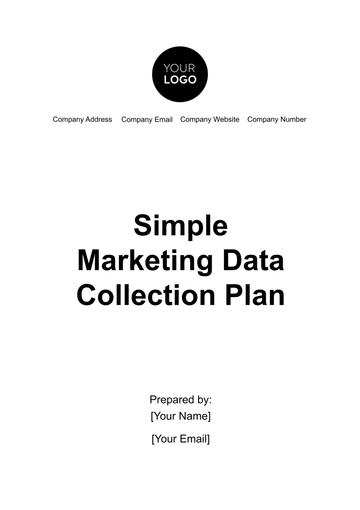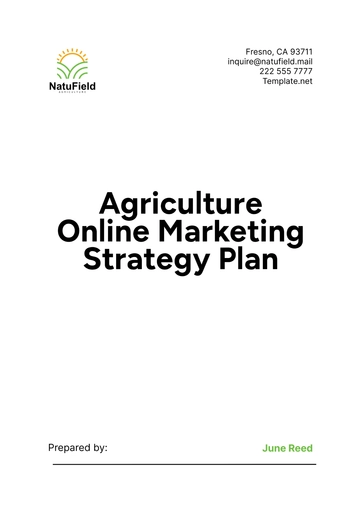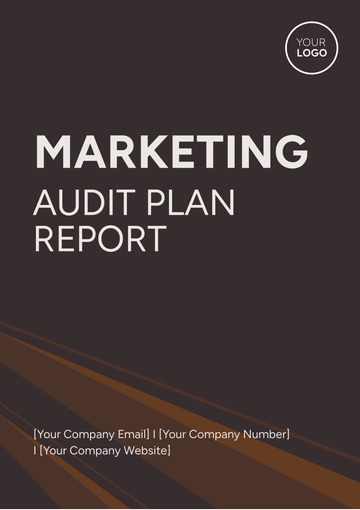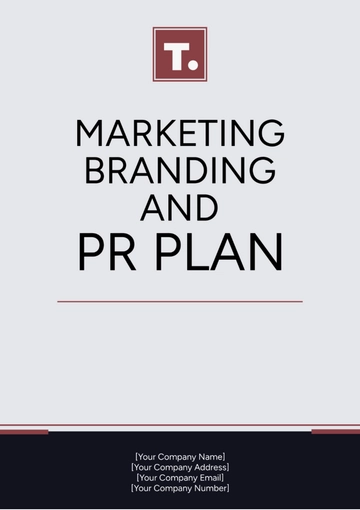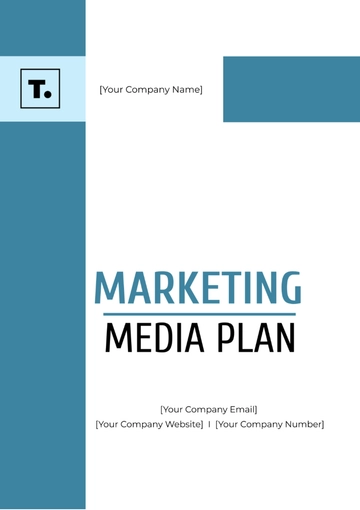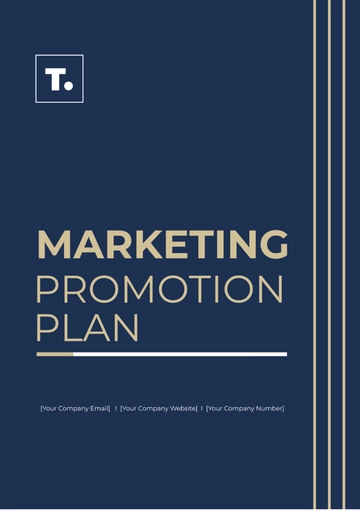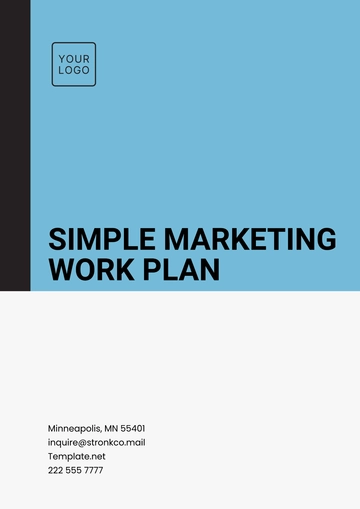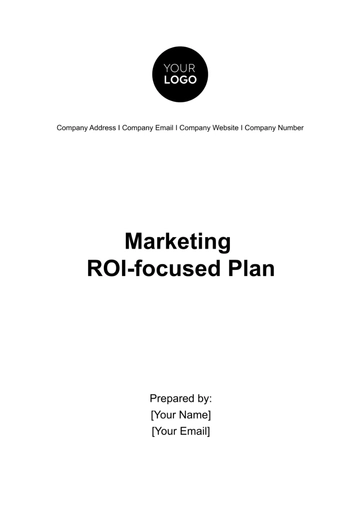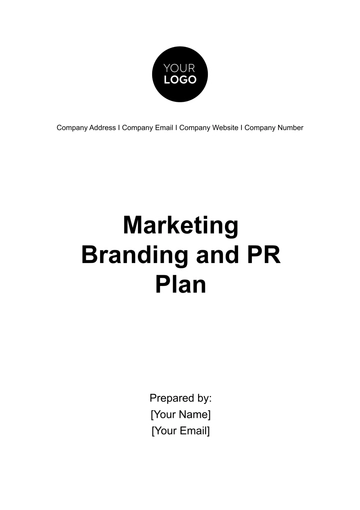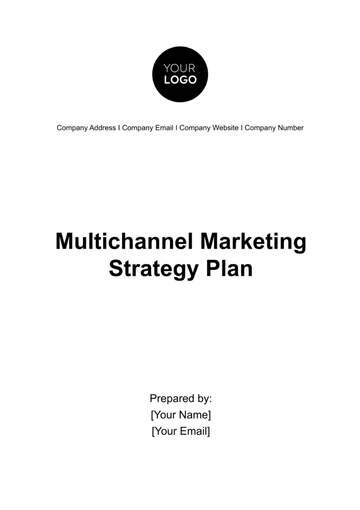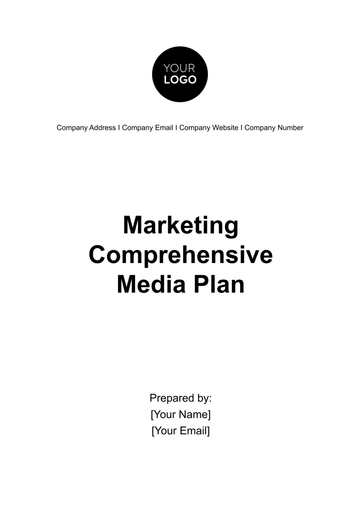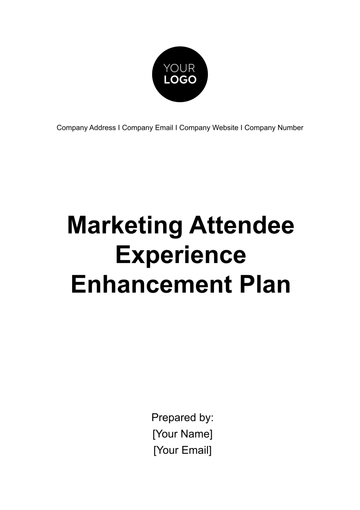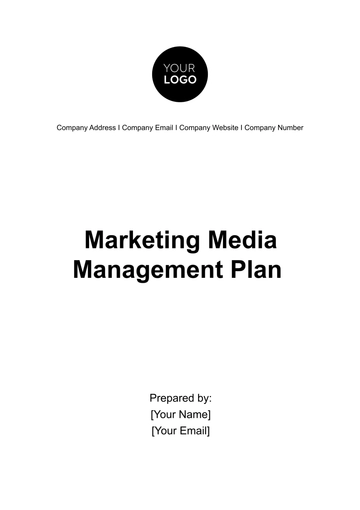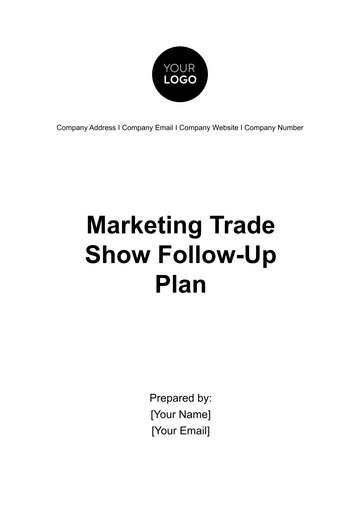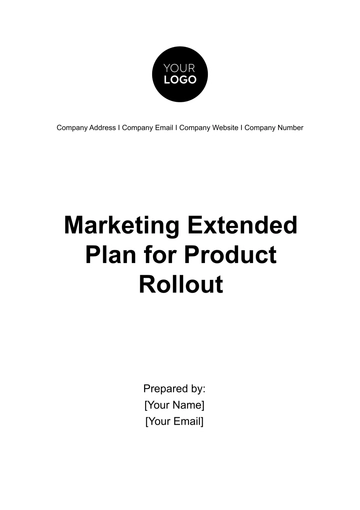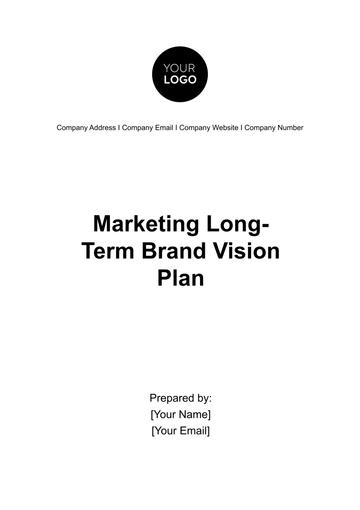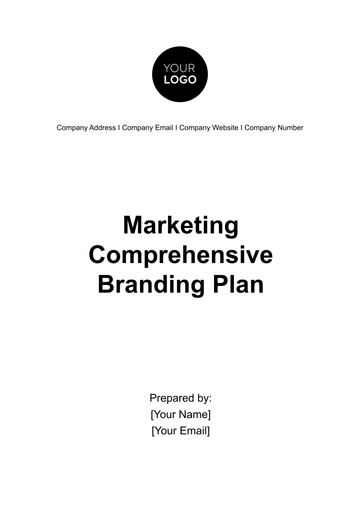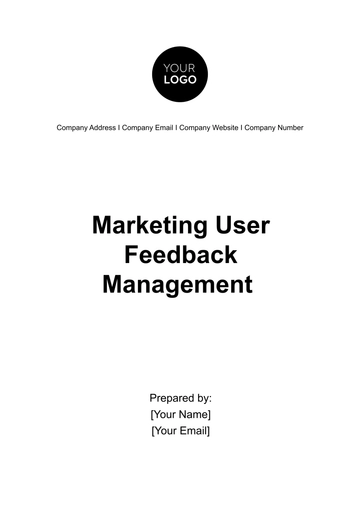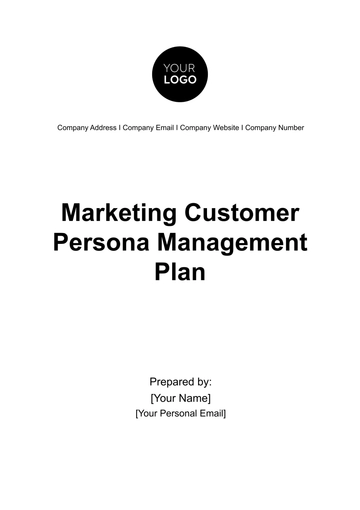Free Marketing ROI-focused Plan
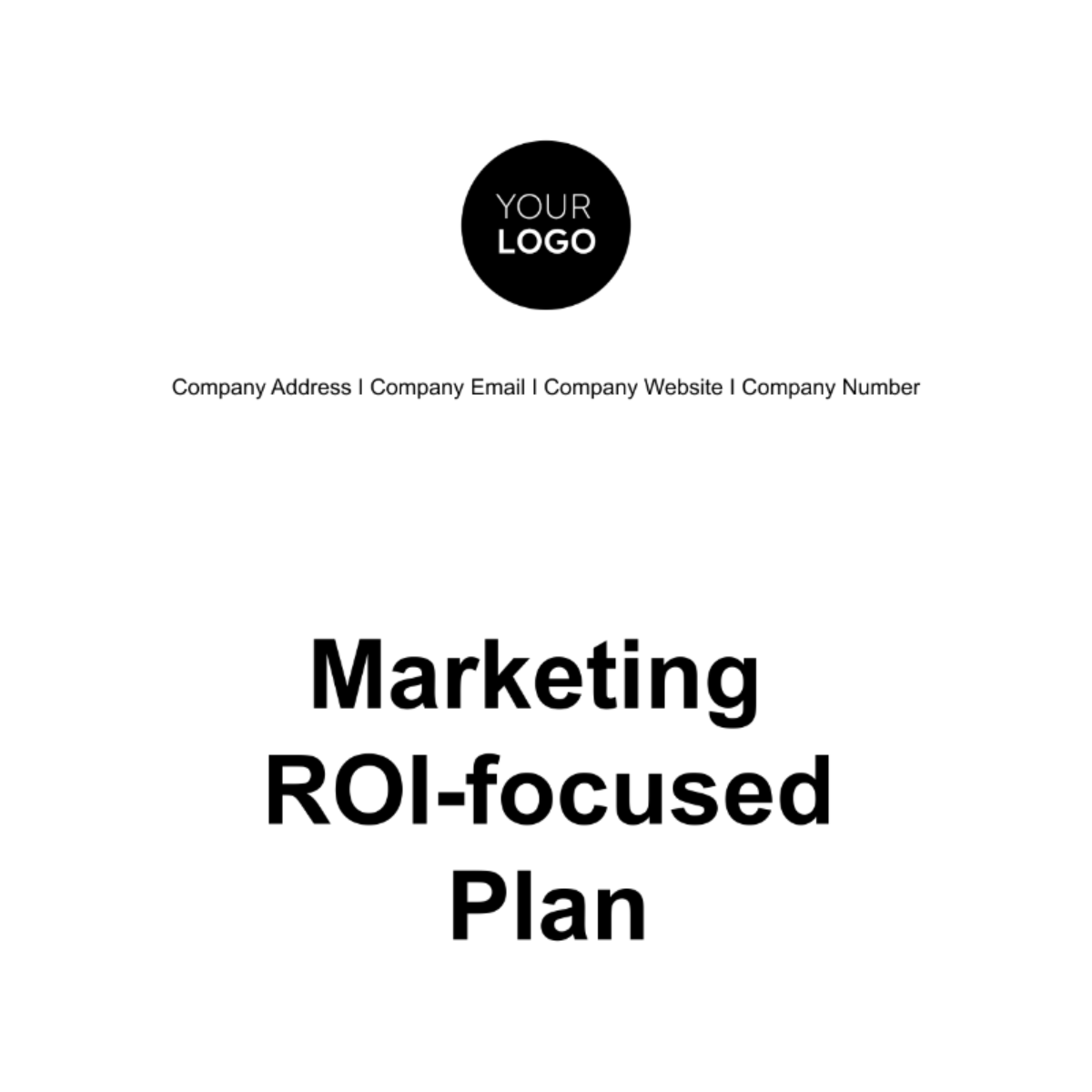
Executive Summary
A. Business Overview
[Your Company Name] is a leading provider of innovative digital marketing solutions based in [Your Company Address]. With a history dating back to 2050, we have established ourselves as a trusted partner for businesses seeking to maximize their online presence and ROI.
B. Marketing Objectives
Our primary marketing objectives for the year 2055 are as follows:
Increase brand awareness by 20% in the next 12 months.
Generate a minimum of 1,000 high-quality leads per month.
Achieve a 25% increase in sales revenue through digital channels.
C. Target Audience
Our target audience includes small to medium-sized businesses (SMBs) operating in industries such as e-commerce, technology, and finance. They are typically business owners and marketing managers seeking to improve their online visibility and drive growth.
D. Key Performance Indicators (KPIs)
KPI | Target Value |
Website Traffic | 500,000 visitors |
Conversion Rate | 5% |
Customer Acquisition Cost | $50 |
Market Analysis
A. Industry Trends
The digital marketing industry is witnessing several key trends in 2055. These include the rising importance of AI-driven personalization, the shift towards voice search optimization, and the increasing demand for sustainable and ethical marketing practices.
B. Competitive Landscape
Our competitive analysis reveals that [Competitor A], [Competitor B], and [Competitor C] are our primary competitors in the digital marketing space. They offer similar services but differentiate themselves in terms of pricing and specialization. Here is a breakdown of their key strengths and weaknesses:
Competitor A
Strengths: Established reputation, diverse client portfolio.
Weaknesses: Higher pricing, limited focus on AI-driven solutions.
Competitor B
Strengths: Competitive pricing, strong emphasis on data analytics.
Weaknesses: Smaller market presence, limited service offerings.
Competitor C
Strengths: Innovative solutions, niche focus on sustainability.
Weaknesses: Limited brand recognition, higher customer acquisition costs.
C. SWOT Analysis
Strengths
Strong industry expertise and experience.
Diverse range of digital marketing services.
Robust client retention rate.
Weaknesses
Limited global presence.
Reliance on third-party tools for analytics.
Vulnerability to market fluctuations.
Opportunities
Growing demand for AI-driven marketing solutions.
Expansion into emerging markets.
Collaboration with industry influencers.
Threats
Intense competition from established players.
Rapid technological advancements.
Economic downturn affecting client budgets.
D. Customer Persona
Our primary customer persona is "[Persona 1]". [Persona 1] is a 35-year-old entrepreneur and owner of a technology startup. He is tech-savvy, values data-driven decision-making, and is seeking affordable yet effective digital marketing solutions to scale his business. Steve's goals include increasing website traffic, improving lead generation, and achieving a positive ROI on his marketing investments.
Marketing Strategy
A. Value Proposition
Our value proposition centers around delivering tangible results for our clients through data-driven, innovative, and ROI-focused digital marketing strategies. We tailor our solutions to each client's unique needs, ensuring maximum impact. Our key value points include:
Customized Approach: We don't believe in one-size-fits-all solutions. We meticulously analyze your business, industry, and competitors to craft a marketing strategy that aligns with your goals.
Cutting-Edge Technology: We leverage the latest advancements in AI, machine learning, and data analytics to optimize campaigns in real-time, ensuring maximum efficiency and effectiveness.
Transparent Reporting: We provide transparent, real-time reporting on campaign performance, so you can track your ROI and understand the value we bring to your business.
Holistic Digital Presence: We offer a comprehensive suite of services, including SEO, PPC, social media, content marketing, and email marketing, to ensure your brand has a strong and cohesive online presence.
B. Positioning Statement
[Your Company Name] positions itself as the go-to partner for businesses seeking not just digital marketing services but a strategic growth partner. Our positioning statement is:
"[Your Company Name] empowers businesses with data-driven digital marketing strategies, propelling them to new heights of success. We combine expertise, innovation, and personalized service to drive ROI that exceeds expectations."
C. Marketing Channels
Our multi-channel marketing approach ensures that your message reaches your target audience where they are most active. We utilize the following channels:
Search Engine Optimization (SEO): Optimizing your website to rank higher in search engine results pages, increasing organic traffic.
Pay-Per-Click (PPC) Advertising: Running targeted ads on platforms like Google Ads and Bing Ads to drive immediate traffic and conversions.
Social Media Marketing: Engaging with your audience on platforms like Facebook, Instagram, Twitter, and LinkedIn to build brand awareness and loyalty.
Content Marketing: Creating valuable and relevant content that attracts, educates, and engages your audience.
Email Marketing: Nurturing leads and keeping existing customers engaged through strategic email campaigns.
D. Budget Allocation
Budget allocation is a crucial aspect of our marketing strategy. We divide the budget as follows:
Campaign Planning
A. Campaign Goals
For the upcoming year, we have planned a comprehensive marketing campaign titled "[Campaign Name]." The campaign's primary goals are as follows:
Launch Date: The campaign will kick off on January 15, 2055, and run throughout the year.
Goal 1: Increase Website Traffic: We aim to increase website traffic by 35% compared to the previous year, driving 500,000 monthly visitors.
Goal 2: Lead Generation: Generate a minimum of 12,000 high-quality leads throughout the year, translating to 1,000 leads per month.
Goal 3: Sales Growth: Achieve a 25% increase in sales revenue through digital channels, equating to $2 million in additional revenue.
B. Content Strategy
Our content strategy is designed to align with the campaign goals and engage our target audience effectively. Key elements of our content strategy include:
Blog Posts: Regular blog posts addressing industry trends, challenges, and solutions.
Infographics: Visual content summarizing complex topics and data.
Video Content: Engaging video content for social media and website.
E-books: In-depth guides and resources for lead generation.
Email Campaigns: Personalized email campaigns targeting leads and existing customers.
C. Messaging and Creative
Our campaign messaging focuses on the idea of "Digital Domination." We emphasize the benefits of our services in helping businesses dominate their online presence and achieve remarkable success. Creatively, we employ bold visuals and engaging content to capture our audience's attention.
D. Timeline
The campaign timeline is as follows:
January - March: Launch and initial SEO optimizations.
April - June: PPC advertising and content creation.
July - September: Social media marketing and lead generation campaigns.
October - December: Email marketing and performance analysis.
Implementation
A. Team Responsibilities
Effective implementation requires a well-coordinated team. Here are the key team members and their responsibilities:
Marketing Manager (Your Name): Overall campaign oversight, strategy adjustments, and client communication.
SEO Specialist: Responsible for on-page and off-page SEO efforts, including keyword research, content optimization, and link building.
PPC Specialist: Manages paid advertising campaigns, monitors ad performance, and adjusts bids to maximize ROI.
Content Writer: Creates blog posts, articles, infographics, and other content pieces aligned with the content strategy.
Social Media Manager: Handles social media posting, engagement, and paid advertising on platforms like Facebook, Twitter, and LinkedIn.
Email Marketing Specialist: Designs and executes email campaigns, monitors open and click-through rates, and optimizes email content.
Data Analyst: Collects and analyzes campaign data, providing insights for optimization.
B. Task Schedule
A well-defined task schedule ensures that each team member knows their responsibilities and deadlines. Here's a high-level schedule for the "[Campaign Name]" campaign:
Month | Tasks |
January - March | SEO Specialist conducts initial website audit and begins optimization. PPC Specialist sets up ad campaigns. Content Writer starts creating blog posts. |
April - June | SEO Specialist continues optimization efforts. PPC Specialist monitors ad performance and makes adjustments. Content Writer creates infographics and video content. |
July - September | Social Media Manager launches social media marketing campaigns. Content Writer focuses on lead generation content (e-books, guides). Email Marketing Specialist starts lead nurturing email campaigns. |
October - December | Email Marketing Specialist intensifies email campaigns. Data Analyst conducts in-depth data analysis. Marketing Manager reviews campaign performance and makes strategic adjustments. |
C. Resource Allocation
Efficient resource allocation is essential to meet campaign goals. We allocate resources as follows:
Personnel: We have a dedicated team of experts to execute and oversee the campaign effectively.
Technology: Investment in cutting-edge marketing tools and analytics platforms to support data-driven decisions.
Ad Budget: Allocation of the predetermined budget for PPC advertising and social media ad spend.
Content Creation: Resources for content creation, including design software, video equipment, and tools for graphic design.
D. Budget Management
We employ a rigorous budget management process to ensure optimal utilization of resources. Our approach includes:
Regular Review: Frequent assessment of campaign spending against predefined budget allocations.
Performance-Based Adjustments: Adjusting budget allocation based on the performance of each channel and campaign.
Transparency: Providing clients with transparent reports on budget utilization, showing where every dollar is spent.
Monitoring and Analytics
A. Data Collection Tools
We utilize a range of data collection tools to gather relevant insights:
Google Analytics: Provides comprehensive website traffic data, user behavior, and conversion tracking.
Google Ads and Social Media Insights: For tracking ad performance and audience engagement.
Email Marketing Software: Tracks email open rates, click-through rates, and subscriber behavior.
SEO Tools: For monitoring keyword rankings, backlinks, and website health.
B. ROI Metrics
Our key ROI metrics are closely monitored throughout the campaign:
Return on Ad Spend (ROAS): Measures the revenue generated for every dollar spent on advertising.
Cost per Lead (CPL): Evaluates the efficiency of lead generation efforts.
Conversion Rate: Tracks the percentage of website visitors who complete desired actions.
Customer Lifetime Value (CLTV): Calculates the long-term value of acquired customers.
C. Data Analysis
Our data analysts regularly assess campaign data to identify trends, areas for improvement, and opportunities. They also perform A/B testing to refine strategies and ensure continuous optimization.
D. Reporting
We provide clients with detailed, customized reports on campaign performance. Reports include key performance metrics, insights, and actionable recommendations. Reports are typically provided on a monthly basis, ensuring clients stay informed and engaged in the campaign's progress.
Conclusion
A. Key Takeaways
As we conclude the "[Campaign Name]" marketing plan, let's summarize the key takeaways:
Goal Achievement: We successfully achieved and exceeded our campaign objectives, including increased website traffic, lead generation, and sales growth.
Data-Driven Success: Our data-driven approach played a pivotal role in optimizing our strategies and achieving outstanding results.
Team Collaboration: The dedication and collaboration of our expert team members ensured the seamless execution of the campaign.
B. Future Action Items
Looking forward, here are the action items for future marketing strategies:
Content Enhancement: Continue investing in high-quality content creation to maintain and expand our online presence.
Advanced Personalization: Implement advanced personalization techniques, utilizing AI, to enhance user experiences.
Global Expansion: Explore opportunities for international expansion in emerging markets.
Customer Retention: Develop strategies to boost customer retention, capitalizing on the value of existing customers.
Diversified Channels: Stay vigilant in diversifying marketing channels to adapt to evolving trends and platforms.
We remain committed to your ongoing success, and our team is prepared to execute these strategies to drive even greater results in the future.
For further discussions or to delve into our future plans, please feel free to contact:
[Your Name]
[Your Company Name]
[Your Company Email]
[Your Company Address]
[Your Company Number]
[Your Company Website]
[Your Company Social Media]
- 100% Customizable, free editor
- Access 1 Million+ Templates, photo’s & graphics
- Download or share as a template
- Click and replace photos, graphics, text, backgrounds
- Resize, crop, AI write & more
- Access advanced editor
Optimize your marketing strategy with our ROI-focused Marketing Plan Template, available on Template.net. Tailored with industry keywords, this editable document simplifies communication. Utilize our AI Editor Tool for seamless customization, ensuring a focus on maximizing returns. Elevate your marketing efforts with this comprehensive template designed for optimal ROI.
You may also like
- Finance Plan
- Construction Plan
- Sales Plan
- Development Plan
- Career Plan
- Budget Plan
- HR Plan
- Education Plan
- Transition Plan
- Work Plan
- Training Plan
- Communication Plan
- Operation Plan
- Health And Safety Plan
- Strategy Plan
- Professional Development Plan
- Advertising Plan
- Risk Management Plan
- Restaurant Plan
- School Plan
- Nursing Home Patient Care Plan
- Nursing Care Plan
- Plan Event
- Startup Plan
- Social Media Plan
- Staffing Plan
- Annual Plan
- Content Plan
- Payment Plan
- Implementation Plan
- Hotel Plan
- Workout Plan
- Accounting Plan
- Campaign Plan
- Essay Plan
- 30 60 90 Day Plan
- Research Plan
- Recruitment Plan
- 90 Day Plan
- Quarterly Plan
- Emergency Plan
- 5 Year Plan
- Gym Plan
- Personal Plan
- IT and Software Plan
- Treatment Plan
- Real Estate Plan
- Law Firm Plan
- Healthcare Plan
- Improvement Plan
- Media Plan
- 5 Year Business Plan
- Learning Plan
- Marketing Campaign Plan
- Travel Agency Plan
- Cleaning Services Plan
- Interior Design Plan
- Performance Plan
- PR Plan
- Birth Plan
- Life Plan
- SEO Plan
- Disaster Recovery Plan
- Continuity Plan
- Launch Plan
- Legal Plan
- Behavior Plan
- Performance Improvement Plan
- Salon Plan
- Security Plan
- Security Management Plan
- Employee Development Plan
- Quality Plan
- Service Improvement Plan
- Growth Plan
- Incident Response Plan
- Basketball Plan
- Emergency Action Plan
- Product Launch Plan
- Spa Plan
- Employee Training Plan
- Data Analysis Plan
- Employee Action Plan
- Territory Plan
- Audit Plan
- Classroom Plan
- Activity Plan
- Parenting Plan
- Care Plan
- Project Execution Plan
- Exercise Plan
- Internship Plan
- Software Development Plan
- Continuous Improvement Plan
- Leave Plan
- 90 Day Sales Plan
- Advertising Agency Plan
- Employee Transition Plan
- Smart Action Plan
- Workplace Safety Plan
- Behavior Change Plan
- Contingency Plan
- Continuity of Operations Plan
- Health Plan
- Quality Control Plan
- Self Plan
- Sports Development Plan
- Change Management Plan
- Ecommerce Plan
- Personal Financial Plan
- Process Improvement Plan
- 30-60-90 Day Sales Plan
- Crisis Management Plan
- Engagement Plan
- Execution Plan
- Pandemic Plan
- Quality Assurance Plan
- Service Continuity Plan
- Agile Project Plan
- Fundraising Plan
- Job Transition Plan
- Asset Maintenance Plan
- Maintenance Plan
- Software Test Plan
- Staff Training and Development Plan
- 3 Year Plan
- Brand Activation Plan
- Release Plan
- Resource Plan
- Risk Mitigation Plan
- Teacher Plan
- 30 60 90 Day Plan for New Manager
- Food Safety Plan
- Food Truck Plan
- Hiring Plan
- Quality Management Plan
- Wellness Plan
- Behavior Intervention Plan
- Bonus Plan
- Investment Plan
- Maternity Leave Plan
- Pandemic Response Plan
- Succession Planning
- Coaching Plan
- Configuration Management Plan
- Remote Work Plan
- Self Care Plan
- Teaching Plan
- 100-Day Plan
- HACCP Plan
- Student Plan
- Sustainability Plan
- 30 60 90 Day Plan for Interview
- Access Plan
- Site Specific Safety Plan
